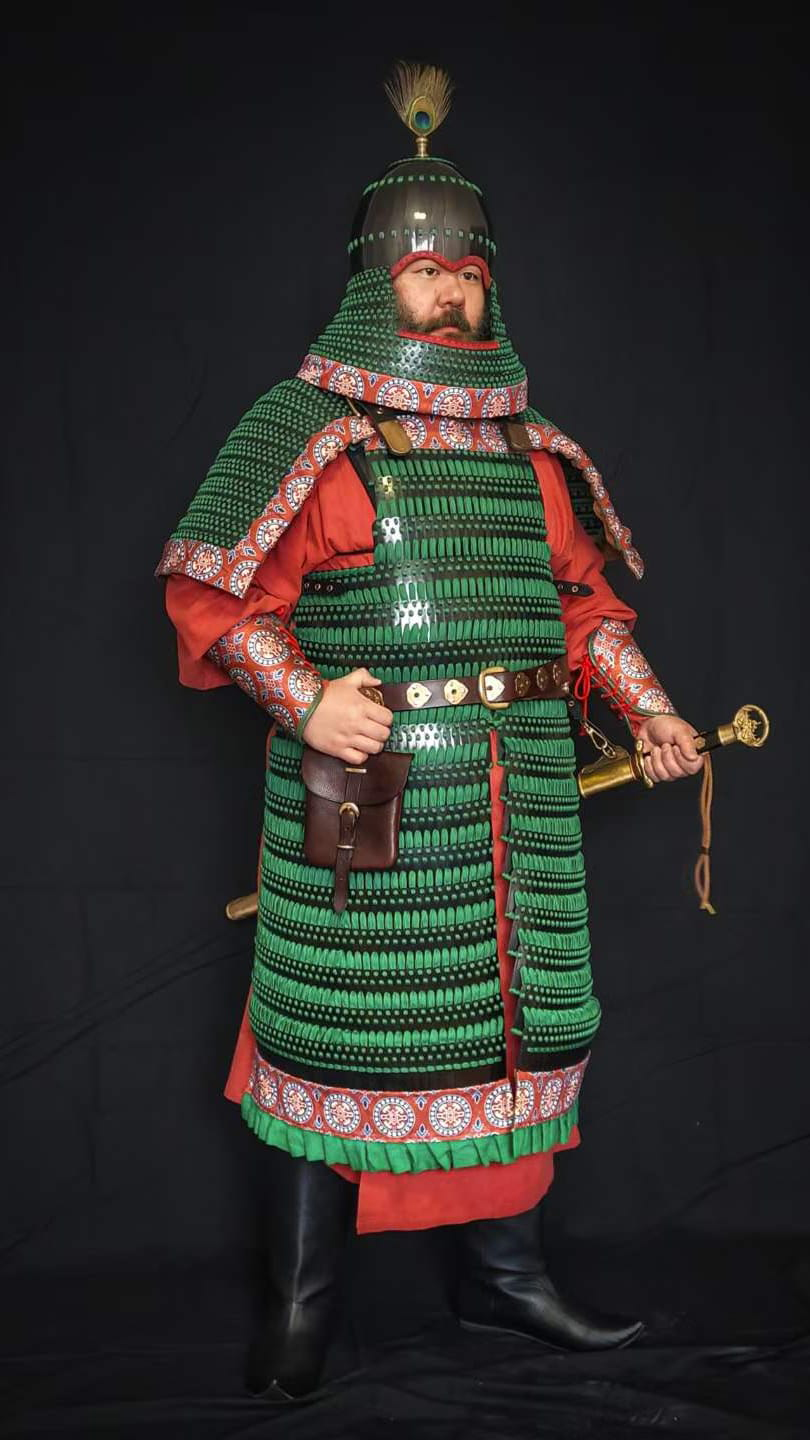Tang Vanguards Armor: Black Armor Army 玄甲军
Armor by Smith Zhang
Link for direct commission with armorer
Price for the armor set: 1250€
Price for the armor set: 1250€. Order Details. Material: 0.7-0.8mm blackened 304 stainless steel lamellar. Description: Complete set incl. helmet*1, shoulder armor *1, front and back body armor *1, vambraces *2. * All other accessories in pictures are available to be ordered extra too.
HISTORICAL BACKGROUND
An interpretation of the young Taizong Emperor's elite vanguard horsemen. They were clad head to toe in distinctive black armor and were thus named 玄甲军 Xuan Jia Jun or "Black Armored Army". They were instrumental in many of Taizong's decisive victories which won Tang the realm. During these battles they served as his companion bodyguards during hammer and anvil charges personally led by Taizong himself.
Music: Prince of Qin (Prince Li Shimin) Breaks through Enemy Arrays
Composed by the future Taizong Emperor's staff
The Black Armor Cavalry was personal raised up by the brilliant 18 year old Prince Li Shimin of Tang. The 玄甲军 Xuan Jia Jun or "Black Armored Army" were 1,000- 3,500 of the most dangerous horsemen bodyguards of the early Tang army. The young Prince Shimin not only joined his father's rebellion against the reigning Sui dynasty but he also prove himself to be a once in an age general on the battlefield.
The young prince would play a pivotal role in defeating several of his emerging dynasty's most dangerous opponents in a staggering succession. These victories would lay a foundation to solidify Tang rule over China for the ensuing two and half centuries. Li Shimin would also one day become one of China's greatest Emperors: Taizong of Tang. When the Black Armor Cavalry was raised, they were to act as his 1,000- 3,500 bodyguard and vanguard shock cavalry, composing of his best horsemen and many of his trusted field commanders.
BATTLEFIELD UTILITY
The Tang were master horsemen. Strongly influenced by the swift Gokturks whom the clan was charged to contend with: Li Yuan- Li Shimin's father and future Gaozu Emperor of Tang heavily relied on speed for even his heaviest cavalry. Instead of fielding them like the northern Chinese cataphracts from the previous centuries,- the horses of these riders were likely not armored and more relied on for their nimbleness. Prince Shimin was an extremely cerebral commander and speed and initiative was always part of his advantage used against his enemies. During contentions nearly in all of his battles the young prince would force march his army to arrive far earlier than his opponent then have them rest well and monopolize the best positions. After that he would take on a tactically defensive approach and try to size up his opponent with teasing probing attacks.
During battles there would often be 2 unit of Blacks, stockpiled for vital hammer and anvil attacks.
Once weakness were spotted, such as lack of supplies or general incohesion, gaps, any inexperience perceived. He would then continue the guise of maintaining the previous skirmish while preparing for a decisive battle. To engage his foes, he often split his force- each of which if required could be used as two hammers and anvils. While the enemy is pinned, the other would approach suddenly from an indirect location that flanked the enemy and quickly charge in to break them.
Artist: 李云中
Famous Chinese artist of Mongolian ancestry.
It is in the context of knowing that Li would divide his whole forces that one understand why there were always two Black Armor Cavalry wings. Once his foes were pinned down his true fatal attack would be commited in full force and Prince Shimin would ride at the head of the assault to deliver the fatal blow. His favorite point of contact often are directed against the weakest and most undisciplined hinges in the enemy flank, thus the weakest of the whole enemy army and the most unreliable soldiers. Such attacks were often fatal and would crush the enemy.
Thank you to my Patrons who has contributed $10 and above: You made this happen!
➢ ☯ MK Celahir
➢ ☯ Muramasa
➢ ☯ Thomas Vieira
➢ ☯ Vincent Ho (FerrumFlos1st)
➢ ☯ BurenErdene Altankhuyag
➢ ☯ Stephen D Rynerson
➢ ☯ Michael Lam
➢ ☯ Peter Hellman
➢ ☯ SunB



.png)
.jpg)







.png)



Comments
Nevermind that Alexander and Napoleon's achievements didn't outlive them by any measures. 1 went up in flames immediately after he died and 2 ended in front of Napoleon's face. If one judges solely by results what endures ought to count farther than battlefield miracles. By that standard Magyars that raided across Europe and Mongols ought to be pretty high up there but in the world today that is not so. But in recent centuries societies of romanticized warrior cultures and warrior kings have been defeated annexed and partitioned by modernized industrialized empires/ states. Statescraft involves long term positioning and adapting to new technology etc. What's more by that point even fighting at the front for a leader is a major hinderance to the goals and thrusts of the state itself. Feudal bands might demands such a form but its no place for true states. After all if that's so why does no modern states do that? Even from supposedly descendants of warrior cultures?
Though I would try to be more specific with the qualifier of forever changed the sociopolitical landscape. Because one can make any kind of argument with that distinction.